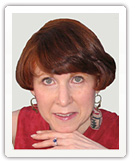E-Tips: Multi-Generational Solutions Archives
What Can You Influence?
August 2004
As many of you know from the programs and coaching I do on “Influence,” I am always looking for examples, success stories and ways I can help people learn to be more influential in their own chosen arenas. People at all levels have some power to influence factors in their work lives based on their personal strengths, their ability to interact with others, and the knowledge that they hold or share. Those in leadership positions are poised to exert more influence than followers, but they have to be willing to take a stand, give consistent support, and be ever vigilant to maintain trust among their colleagues and “followers.” Unless the leader is truly a dictator, direct influence is limited.
Let's take a look at ways that a leader at any level – from chair/CEO or managing partner to practice or business unit head or committee chair, or team leader, to name the most obvious – can directly influence the climate for high performance and creativity/innovation in an organization. These factors are likely to trigger intrinsic motivation in their professional and manager constituents or team members.
- Professionals and executives seek challenge in their work. Leaders can affect the degree to which they are emotionally engaged and committed to their work.
- Control over their jobs is a significant intrinsic motivator. Leaders have an important say in how much freedom professionals and managers have to decide how to do their jobs.
- Leaders decide how much support in terms of resources and visible backing of ideas they give to individuals and teams.
- Leaders influence how much risk-taking is carried out by not only their words of encouragement, but also their decision not to put disincentives in place and take negative actions upon failure.
- Creating an open environment where people feel safe in putting forth their points of view is an important way in which leaders sustain a high performance culture built on trust.
- Leaders have considerable influence on how conflict is managed. Conflict can be a good thing; a high performance climate cannot exist without some conflict, well managed.
- Related to conflict and openness is the ability of individuals and team members to engage in lively discussion and debate about opportunities, problems and challenges. The more alternatives presented, the better the decision-making. Leaders can directly influence the degree of opportunity for debate.
The factors above are part of the dimensions of the climate for innovation defined by Scott Isaksen and other researchers at the Center for Creative Studies at the State University of New York, Buffalo and are based on studies by Goran Ekvall of the University of Lund in Sweden during the 1980s. The studies demonstrated that the climate within an organization had a significant effect on people's willingness and ability to be creative and innovative. (Thanks to Brian Ward, Principal in Affinity Consulting, for this information). That is necessary for achieving and sustaining high performance over time.
Another significant factor influencing high performance in teams is the ability to convene a group of people with a variety of natural role preferences. The ability to convene a desired group of people is one part of a definition of power. Teams often get stuck because they are made up of multiple people who want to play the same role or don't feel comfortable in the role they are asked to play in the process of creation and implementation of an idea or project. The style and role preference don't mesh. Yet the same individuals might be much more productive if roles were designated based on their natural preferences.
The four primary roles, one passing off responsibilities to the next, are Creator, Advancer, Refiner, and Executor. A fifth, Facilitator has attributes of each of the four and can play a harmonizing role. The Creator generates original ideas and is usually a "big picture" thinker. With the new ideas, the Advancer recognizes opportunities and ways to promote the ideas. The Refiner analyzes, challenges and looks for problems with the ideas and may hand them back with the analysis to the Advancer or Creator for more shaping, if necessary. Then the Executor sets the plans for implementation in motion and follows through the process to completion. Many people can play more than one role or flex their style enough to do it competently.
In any case, a successful team needs in combination people who can willingly and competently take on all of the roles. An assessment we use called “Team Dimensions Profile” helps identify preferred roles and helps teams organize their processes and projects.
Back to the subject of "influence." If you are a leader at any level, be cognizant of the ways you have the ability to directly influence the culture of your firm or group, individuals' motivation to take risks and innovate, and ultimately their work satisfaction. Use this influence wisely.
© Phyllis Weiss Haserot, 2004. All rights reserved.
Studies show that coaching increases skill development by 88%! Explore your, or your colleagues', needs for bringing in more business, navigating firm culture or other workplace issues in a confidential, free interview with Phyllis by calling 212-593-1549.
Ask about our programs, *Capitalizing on Your Personal Style* and *Get a Seat at the Table* and new coaching groups on “Building Your Influence.”
See www.pdcounsel.com
We welcome and encourage your comments to pwhaserot@pdcounsel.com
To be put on the list for a free subscription to this e-Alert, send an e-mail to pwhaserot@pdcounsel.com with “Organizational Effectiveness” in the subject line. And for my *Inter-Generational Relations* monthly e-tip, put “Inter-Generational Relations” in the subject line.

